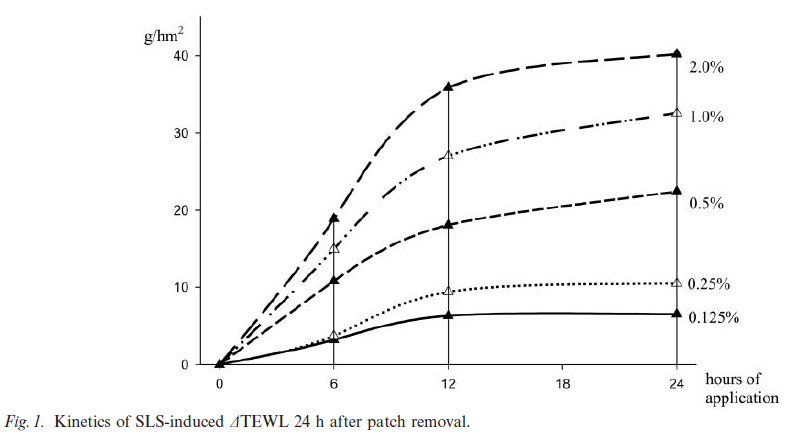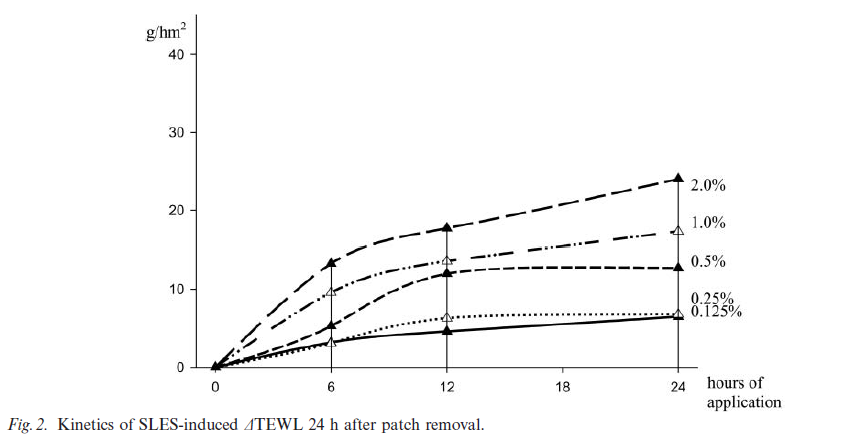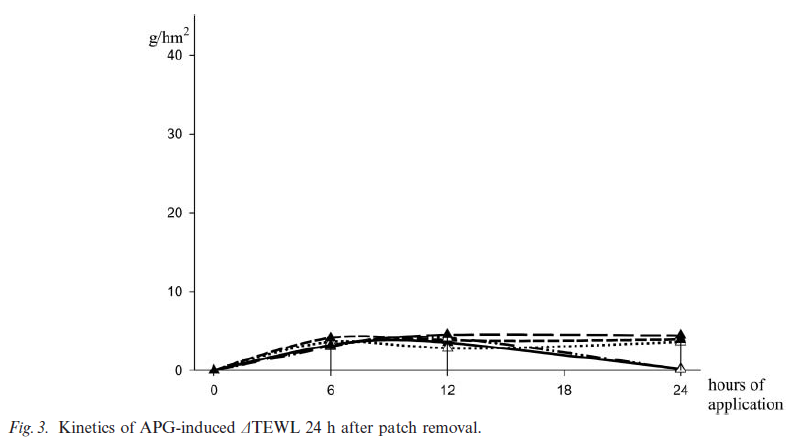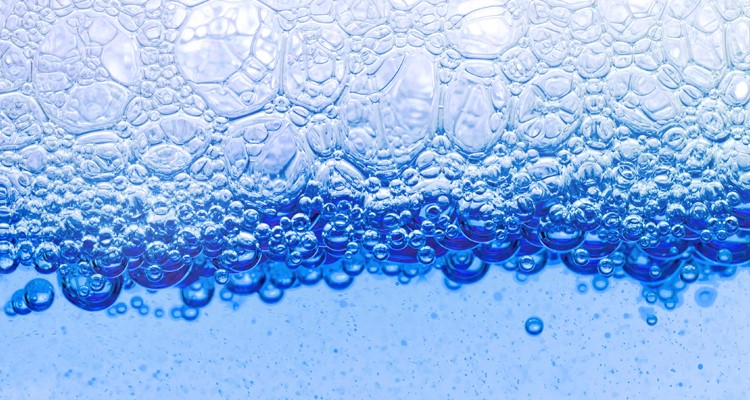Blog
December. 19 2025


Alkyl polyglucoside (APG) is a green, nonionic surfactant sourced from natural materials like glucose and fatty alcohols, offering mildness and high biodegradability over 98%, with a degree of polymerization between 1.3 and 1.7for effective cleaning and low irritation in personal care and industrial applications.
Basic Definition and Structure of APG
Alkyl polyglucoside (APG) is essentially a non-ionic surfactant, meaning it does not ionize in water, but functions through the balance of a hydrophilic head and a hydrophobic tail.
Its structure is quite simple: an APG molecule consists of two parts——a hydrophilic glycoside (from glucose) and a hydrophobic fatty alkyl chain (from natural fatty alcohol).
The chemical structure of APG can be represented by a general formula: R-O-(G)_X, where R represents the alkyl chain (based on renewable resources like coconut oil or palm oil), G is the glucose unit, and X is the Degree of Polymerization (DP), typically between 1.3 and 1.7.
This DP value is critical——it influences the solubility and foaming properties of APG; for instance, when DP is high, APG is more water-soluble, making it suitable for products requiring quick foam, such as shampoos.
In fact, it is this naturally derived assembly that allows APG to avoid the environmental issues associated with petroleum-based products.
The main raw materials for producing APG are glucose and fatty alcohol, with glucose derived from plants like corn or sugarcane, and fatty alcohol extracted from coconut oil or palm oil. The entire process reduces the carbon footprint, adhering to the principles of green chemistry.
Structural Part | Source | Functional Description |
Hydrophilic Glycoside (Glucose) | Plant-derived (e.g., corn glucose) | Provides water solubility, enhances mildness, makes APG easily biodegradable, and non-irritating to the skin. |
Hydrophobic Alkyl Chain (R Group) | Natural fatty alcohol (e.g., coconut oil) | Responsible for oil adsorption, reducing surface tension, achieving emulsification and cleansing, while imparting alkali resistance. |
Degree of Polymerization (DP=1.3-1.7) | Synthesis control parameter | Regulates molecular size: Higher DP leads to greater viscosity, suitable for thickening formulas; higher DP foams quickly, used for light products. |
This structure is not arbitrary——it allows APG to perform outstandingly in applications.
For example, the hydrophilic glycoside part being plant-derived makes APG inherently mild and low-irritating, suitable for sensitive skin;
while the hydrophobic alkyl chain ensures its stability even in high-alkalinity environments, unlike some traditional surfactants that easily lose effectiveness.
Direct benefits from APG's structure:
Environmental Advantages: All-natural origin ingredients mean APG is biodegradable >98%, with no harmful residues after degradation, safe for aquatic life.
Functional Versatility: By adjusting the alkyl chain length (e.g., C8-C14), APG can be customized for different scenarios——short chains for mild cleansers, and long chains for products requiring long-lasting foam.
Broad Compatibility: The non-ionic nature allows APG to blend perfectly with other surfactants (such as anionic SLS or amphoteric betaine), reducing formulation conflicts.
Traditional products like SLS (Sodium Lauryl Sulfate) often rely on petroleum-based raw materials and contain sulfate groups in their structure, which can cause skin dryness and environmental accumulation.
In contrast, APG's glycoside structure mimics sugars found in nature, is more easily decomposed by microorganisms, and does not produce byproducts like 1,4-dioxane.
Core Properties and Advantages of APG: Mildness
The core properties of APG can be summarized by three keywords. First, mildness is the signature characteristic of APG. it can also be understood as Low Irritation and Safety: Verified through international testing, suitable for sensitive skin and frequent daily use, without damaging the skin barrier.
According to test data, APG, as shown by the OECD 404 skin irritation test, has significantly lower irritation than traditional surfactants such as SLS (Sodium Lauryl Sulfate) or SLES (Sodium Laureth Sulfate).
For example, in a skin patch test, SLS and SLES significantly increase the skin's transepidermal water loss rate within 24 hours, leading to dryness and barrier damage, while APG causes almost no such reaction.
This is because APG's molecular structure is derived from natural sugars and fatty alcohol, unlike petroleum-based products which have strong degreasing properties.



A chart visually demonstrates this comparison: The skin water loss curve after using SLS and SLES fluctuates dramatically, while APG's curve is stable, indicating its greater skin-friendliness. This mildness makes APG particularly suitable for people with sensitive skin, for example, in baby shampoos or facial cleansing products.
Core Properties and Advantages of APG: Multifunctionality
APG's functional versatility is also one of its core advantages.
APG performs excellently in emulsification, foaming, and detergency. For example, in high-salt (NaCl) or high-temperature environments, the emulsifying ability of many surfactants decreases, but APG's interfacial activity might even increase, thanks to its glycoside structure's ability to adapt to extreme conditions.
Emulsification experiments show that the emulsion volume formed by APG is more stable, with almost no breakdown within 30 minutes, whereas emulsions of other surfactants rapidly decompose.
This stability makes APG highly valuable in industrial cleaning, such as in high-temperature car wash agents.
At the same time, APG's foaming ability is also noteworthy: APG with an alkyl chain length around C10 has the best foaming performance, high foam height, and short liquid drainage time. This means it can produce rich and long-lasting foam in shampoos or bubble baths without needing extra foaming agents.
APG's advantages are also reflected in its synergistic effect——when compounded with other surfactants, it not only enhances detergency but also reduces the overall formula's irritation.
When combined with anionic surfactants like LAS or AES, APG can significantly reduce skin irritation;and when compounded with amphoteric surfactants like betaine (CAB), it creates a "1+1>2" effect, boosting cleaning efficiency.
This compatibility makes APG a "master key" for formulators, flexibly integrating into both household cleaning agents and personal care products.
Practical examples:
Multifunctionality in One: Self-contained emulsification, foaming, and stabilizing properties, reducing the need for additives in the formula and lowering costs.
Broad Compatibility: Harmonizes with various surfactants, enhancing product effectiveness while improving safety.
Broad Application Scenarios
Personal care is one of APG's "home grounds," thanks to its mild and low-irritation characteristics. Imagine using shampoo or facial cleanser where the ingredients are too harsh, leaving your skin tight and your hair dry afterward—how frustrating would that be.
APG avoids this issue——test data shows it passes the OECD 404 skin irritation test, is non-sensitizing, and does not damage the skin barrier, making it particularly suitable for sensitive skin and frequently used products.
For instance, in shampoos, APG not only effectively cleanses scalp oil but also stabilizes foam, allowing you to work up rich, dense lather without adding sulfates (like SLS).
ANECO's product list cites several examples: AC1200 (Lauryl Glucoside) specializes in personal care, with a C12-14 carbon chain length, enhancing formula mildness;
AC2000 (Decyl Glucoside) is used in bubble baths or cleansing gels, foaming quickly and rinsing easily.
In practice, APG's mildness makes it a preferred choice for baby care products and high-end cosmetics; for example, in cleansing lotions, it acts as an emulsifier, helping oil and water mix and preventing chemical residue.
Advantages of APG in personal care:
Safety First: Low-allergenic, suitable for sensitive skin and daily use, reducing the risk of skin dryness.
Integrated Functions: Self-contained cleaning, foaming, and stabilizing effects, reducing reliance on irritating additives.
Environmental Bonus: Rapid biodegradability; does not pollute the environment when washed down the drain after showering.
But APG's applications extend far beyond personal care——it also shines brightly in the home care sector.
Here, APG acts as a "smart cleaner": its molecular structure rapidly adsorbs oil and dirt, and through emulsification, disperses the grime into small particles that are easily rinsed away.
APG remains stable in highly alkaline environments, so when used in dishwashing detergents, it maintains effectiveness even with high water temperature or hard water.
For example, ANECO's AC8170N (Caprylyl/Capryl Glucoside) is specifically designed for home cleaning, with C8-10" carbon chains, strong detergency, and high compatibility, allowing it to be compounded with other surfactants like LAS, enhancing overall performance without increasing irritation.
Test data also show that APG's emulsifying ability barely declines under high temperature and high salt, allowing it to tackle stubborn stains like grease or perspiration marks in laundry detergents.
APG effectively removes contaminants, meaning that when used in carpet spot removers in a home setting, stains are removed more thoroughly, with no harmful residue.
Typical products and applications of APG in home care:
Product Model | INCI Name | Main Application Scenario | Key Advantage Description |
AC818 | Coco-Glucoside | Dishwashing liquid, Laundry detergent | Medium chain length (C8-14) balances cleaning and mildness, suitable for frequent use. |
AC650 | Coco-Glucoside | Textile auxiliaries | Enhances detergency, reduces fiber damage, used for laundry pre-treatment. |
AC425N | Coco-Glucoside | Carpet spot removers | Rapidly emulsifies grease and dirt, fast biodegradation, avoids chemical residue. |
Extending from home care to industrial cleaning, APG's performance becomes even more "hardcore." Industrial environments are often demanding——high temperatures, high salt, strong alkalinity——but APG handles them with ease.
Test data confirms that APG's emulsification performance does not decrease but increases under NaCl or high temperature, making it an ideal choice for industrial cleaners.
For example, in car washing, APG is used in hard surface cleaners, effectively removing oil and dust, and possessing strong weather resistance, so it won't fail due to sunlight or rain.
In the I&I (Industrial and Institutional) cleaning sector, APG is used for large equipment or floor cleaning. The document mentions ANECO's AC600 (Lauryl Glucoside) specializes in such scenarios, with C12-14" carbon chains providing long-lasting foam and reducing the need for repeated wiping.
More notably, APG's application in environmental remediation, where it can remove 80% of lead contamination during soil washing. While this is a professional domain, the principle is similar to industrial detergency: APG molecules can encapsulate heavy metal ions for safe removal.
This multifunctionality is not arbitrary but is based on its structural advantages; for example, when compounded with anionic surfactants, APG reduces the overall corrosiveness of the formula, protecting machine surfaces.
In industrial settings, APG is also used in hard surface cleaners, such as for kitchens or bathrooms. Its alkali resistance means it will not decompose and fail even in high-pH cleaning solutions.

Core Properties and Advantages of APG: Environmental friendliness
The core environmental advantage of APG lies in its biodegradability and ecological compatibility, which makes it stand out among many surfactants.
Rapid Biodegradability means extremely high degradation rate, reducing environmental burden, compliant with green certifications such as COSMOS and HALAL.
Environmental friendliness is another major highlight of APG, mainly reflected in its biodegradability and environmental compatibility. Test data clearly shows that APG, according to the OECD 301D standard, has a degradation rate of about 70% within 28 days, with an ultimate degradation rate exceeding 98%. This means it can rapidly decompose in the natural environment and does not leave persistent metabolites (such as 1,4-dioxane) like some traditional surfactants such as SLS or LAS. This high-efficiency degradation benefits from APG's natural molecular structure: it is derived from glucose and fatty alcohol, ingredients that naturally exist, allowing microorganisms to easily "consume" them.
In contrast, petroleum-based surfactants often have a degradation rate of only 50-80% and may produce harmful byproducts. APG is non-toxic to aquatic life, and the document emphasizes it does not interfere with the ecosystem, which is especially important today with increasing global water pollution. For example, in detergent applications, APG flows into the environment after use without leaving residual chain segments like some PEG-type products, preventing long-term pollution.
APG is non-toxic to aquatic life, which is particularly important in the context of increasing water pollution today——for example, APG will not disrupt the ecosystem when detergents flow into rivers.
Differences in key properties between APG and traditional surfactants:
Property Category | APG (Alkyl Polyglucoside) | Traditional Surfactants (e.g., SLS/SLES) | Other Non-ionics (PEG type) |
Biodegradability | >98% (OECD 301) | 50-80%, some metabolites are difficult to degrade | <60%, slow degradation of PEG chains |
Skin Irritation | Non-sensitizing (OECD 404) | High, easily causes skin dryness | Low, but risk of dioxane residue |
Environmental Compatibility | Non-toxic to aquatic life | May pollute water bodies (e.g., 1,4-dioxane) | PEG residue or ecological interference |
Functional Scalability | Self-contained cleaning, foaming, and thickening functions | Often requires compound thickeners (e.g., CAPB) | Relies on chemical modification (e.g., ethoxylation) |
APG has obtained multiple international certifications, such as COSMOS, HALAL, NATRUE, and RSPO. These certifications are not for show but are rigorous checks on whether the raw material sources (such as renewable palm oil) and production processes comply with environmental standards.
For example, the COSMOS certification requires reducing the chemical footprint throughout the product's life cycle. APG has a high natural index (most products in the document have a natural origin index of 1), meaning that carbon emissions are controlled from raw material cultivation to finished product.
Summary of APG's environmental advantages:
Rapid Degradation: Extremely high degradation rate, reducing environmental accumulation, compliant with international testing standards like OECD.
Safe and Non-toxic: Friendly to aquatic life, no harmful residue, suitable for sensitive ecosystems.
Certification Endorsement: Passed certifications such as COSMOS and HALAL, ensuring a fully traceable green supply chain.
Production Advantages of ANECO
APG's production process itself is a model of sustainability. Taking ANECO as an example, their production advantages are reflected in high efficiency, stability, and environmental investment. Firstly, APG's raw materials come from renewable plants, such as coconut or palm oil, reducing petroleum dependence.
The production process utilizes green chemistry: glucose and fatty alcohol react under a catalyst, followed by purification to obtain the product. The entire process is low in energy consumption, ANECO uses improved crystallization technology to enhance efficiency while reducing costs.
More specifically, ANECO has over 20 years of experience with an annual capacity of up to 60,000 tons. This is not a small number——it means large-scale production can lower costs, making APG prices more competitive while meeting global demand.
They have a stable supply chain: one 1000-ton storage tank and four 100-ton storage tanks for raw material inventory, which helps prevent shortages caused by environmental policies (such as factory shutdowns in China). Environmental investment in production is also significant: approximately 2 million USD annually is spent on environmental measures, such as treating wastewater and exhaust gas, ensuring compliance with regulations like REACH.
ANECO is RSPO certified, ensuring sustainable sourcing of palm oil and reducing the risk of deforestation.
Comparison of APG's production advantages versus traditional methods:
Production Aspect | APG (Taking ANECO as Example) | Traditional Surfactant Production |
Raw Material Source | Renewable plants (e.g., coconut oil) | Petroleum-based or non-renewable resources |
Production Capacity | Annual capacity of 60,000 tons, secured by large storage tanks | Often smaller scale, vulnerable to supply chain fluctuations |
Environmental Investment | 2 million USD annually, focused on emission reduction and certification | Low investment, potential for polluting byproducts |
Technical Support | 40+ R&D personnel, 42 patents for process improvement | Relies on traditional methods, slow innovation |
Beyond hard data, APG's production advantages are also reflected in technical details. For example, ANECO's R&D team has 40+ technical personnel specializing in bioengineering, allowing them to customize APG products——such as adjusting chain length or pH value to suit different needs (e.g., milder products for personal care, stronger detergency for industrial cleaning).
This flexibility is unmatched by traditional production: traditional surfactants are often standardized, whereas APG can develop new products through glycosylation technology, such as the AC-PO65 blend formula.
Environmental compliance is also increasingly strict in production. ANECO uses third-party testing (like Pony Testing and Eurofins) to ensure consistency in every batch, avoiding quality fluctuations. Behind all this is APG's sustainability logic: from raw material cultivation to final product, it reduces the ecological footprint. For instance, using renewable raw materials supports the circular economy, and rapid degradation reduces waste disposal pressure.
In practical cases, this advantage translates into real benefits——for example, a household brand choosing an APG-based cleaner can not only market the "green" label but also reduce compliance risks because APG has completed REACH registration, allowing for global use.